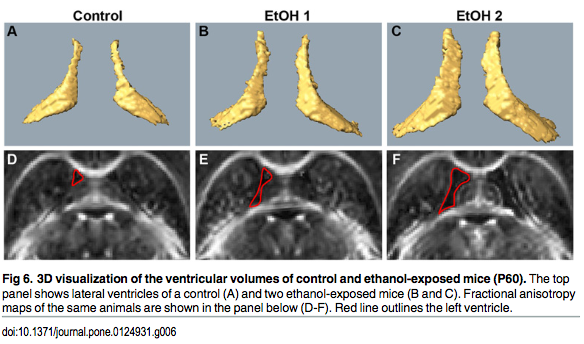|
|
Welcome to The Visible Embryo, a comprehensive educational resource on human development from conception to birth.
The Visible Embryo provides visual references for changes in fetal development throughout pregnancy and can be navigated via fetal development or maternal changes.
The National Institutes of Child Health and Human Development awarded Phase I and Phase II Small Business Innovative Research Grants to develop The Visible Embryo. Initally designed to evaluate the internet as a teaching tool for first year medical students, The Visible Embryo is linked to over 600 educational institutions and is viewed by more than one million visitors each month.
Today, The Visible Embryo is linked to over 600 educational institutions and is viewed by more than 1 million visitors each month. The field of early embryology has grown to include the identification of the stem cell as not only critical to organogenesis in the embryo, but equally critical to organ function and repair in the adult human. The identification and understanding of genetic malfunction, inflammatory responses, and the progression in chronic disease, begins with a grounding in primary cellular and systemic functions manifested in the study of the early embryo.

The World Health Organization (WHO) has created a new Web site to help researchers, doctors and patients obtain reliable information on high-quality clinical trials. Now you can go to one website and search all registers to identify clinical trial research underway around the world!

|
|
| Disclaimer: The Visible Embryo web site is provided for your general information only. The information contained on this site should not be treated as a substitute for medical, legal or other professional advice. Neither is The Visible Embryo responsible or liable for the contents of any websites of third parties which are listed on this site. |
|
|
 |
|
Content protected under a Creative Commons License. Commons License.
No dirivative works may be made or used for commercial purposes. |
|
|
| |
|
|

CLICK ON weeks 0 - 40 and follow along every 2 weeks of fetal development
|
|
|
|
|
Home | Pregnancy Timeline | News Alerts |News Archive May 28, 2015


When the mouse drinks alcohol in early pregnancy, her pups show symptoms similar to what
fetal alcohol syndrome (FAS) looks like in humans, and appears in the adult pups as well.
In humans, the first three or four weeks after conception echos this early period of mouse
development. A period when human moms-to-be are often unaware of being pregnant. |
|
|
|
|
|
Alcohol damage before mom knows of pregnancy
Exposure to alcohol in early pregnancy changes the way genes function and influences brain structure in mice — and looks like human fetal alsohol syndrome.
In addition, the exposure to alcohol was found to cause similar changes to gene function in other tissues of the infant mice. These results suggest that alcohol causes permanent changes to gene regulation in the first cells of a developing embryo.
The study from the University of Helsinki reveals that alcohol changes in gene function of pup brains is also retained in them as adults. The alcohol exposure in mice corresponded to weeks 3-6 of human gestation, when few women may be aware they are pregnant.
Alcohol in pregnancy can damage a child in many different ways, from learning disabilities to congenital deformities. But how alcohol impacts fetal development isn't fully understood and diagnosing damage to a fetus is difficult. By studying the mouse we see that when the dam drinks in early pregnancy, her offspring exhibit symptoms similar to fetal alcohol syndrome (FAS) in humans. This means a decreased growth rate, face and skull structural changes and hyperactivity. In the mouse, early exposure began at conception and continued until the nervous system begins to develop, which corresponds to the first three or four weeks after human conception. A period during which the human mother-to-be is often unaware she is pregnant.
Early pregnancy is an active time for cell division and differentiation of tissue types. Although all different cell types share a similar DNA strand, each of them has a unique epigenome formed to regulate gene function. In its earliest stages, the embryo is vulnerable to external influences and will incorporate changes that affect cell division.
In the study, which appears in PLOS-One, leader Dr. Nina Kaminen-Ahola wanted to determine whether alcohol consumed in early pregnancy causes changes to the epigenome regulating an embryo's genes. Also, to examine whether changes would still be seen later in gene function and brain structure.
Her research focused on the hippocampus, a brain structure important for memory and learning. The hippocampus is known to be particularly sensitive to alcohol. In the study, early exposure to alcohol changed the epigenome and function of several genes in the hippocampi of infant mice. Alcohol-induced changes were also seen in brain structures of the adult offspring: hippocampi, olfactory bulbs and cerebral ventricles.
In addition to the hippocampus, alcohol caused similar changes to gene function in two different tissues of the infant mice — bone marrow and the olfactory epithelium of the snout.
"The results support our assumption that alcohol permanently alters gene regulation at a very early stage. This would be significant for the challenging diagnostics of alcohol-induced damage. Ideally, a swipe sample from inside the mouth of a newborn could reveal the extent of damage caused by early pregnancy alcohol exposure."
Nina Kaminen-Ahola PhD, Department of Medical Genetics, Faculty of Medicine, University of Helsinki, Helsinki, Finland.
Abstract
The adverse effects of alcohol consumption during pregnancy are known, but the molecular events that lead to the phenotypic characteristics are unclear. To unravel the molecular mechanisms, we have used a mouse model of gestational ethanol exposure, which is based on maternal ad libitum ingestion of 10% (v/v) ethanol for the first 8 days of gestation (GD 0.5-8.5). Early neurulation takes place by the end of this period, which is equivalent to the developmental stage early in the fourth week post-fertilization in human. During this exposure period, dynamic epigenetic reprogramming takes place and the embryo is vulnerable to the effects of environmental factors. Thus, we hypothesize that early ethanol exposure disrupts the epigenetic reprogramming of the embryo, which leads to alterations in gene regulation and life-long changes in brain structure and function. Genome-wide analysis of gene expression in the mouse hippocampus revealed altered expression of 23 genes and three miRNAs in ethanol-exposed, adolescent offspring at postnatal day (P) 28. We confirmed this result by using two other tissues, where three candidate genes are known to express actively. Interestingly, we found a similar trend of upregulated gene expression in bone marrow and main olfactory epithelium. In addition, we observed altered DNA methylation in the CpG islands upstream of the candidate genes in the hippocampus. Our MRI study revealed asymmetry of brain structures in ethanol-exposed adult offspring (P60): we detected ethanol-induced enlargement of the left hippocampus and decreased volume of the left olfactory bulb. Our study indicates that ethanol exposure in early gestation can cause changes in DNA methylation, gene expression, and brain structure of offspring. Furthermore, the results support our hypothesis of early epigenetic origin of alcohol-induced disorders: changes in gene regulation may have already taken place in embryonic stem cells and therefore can be seen in different tissue types later in life.
Return to top of page
|
